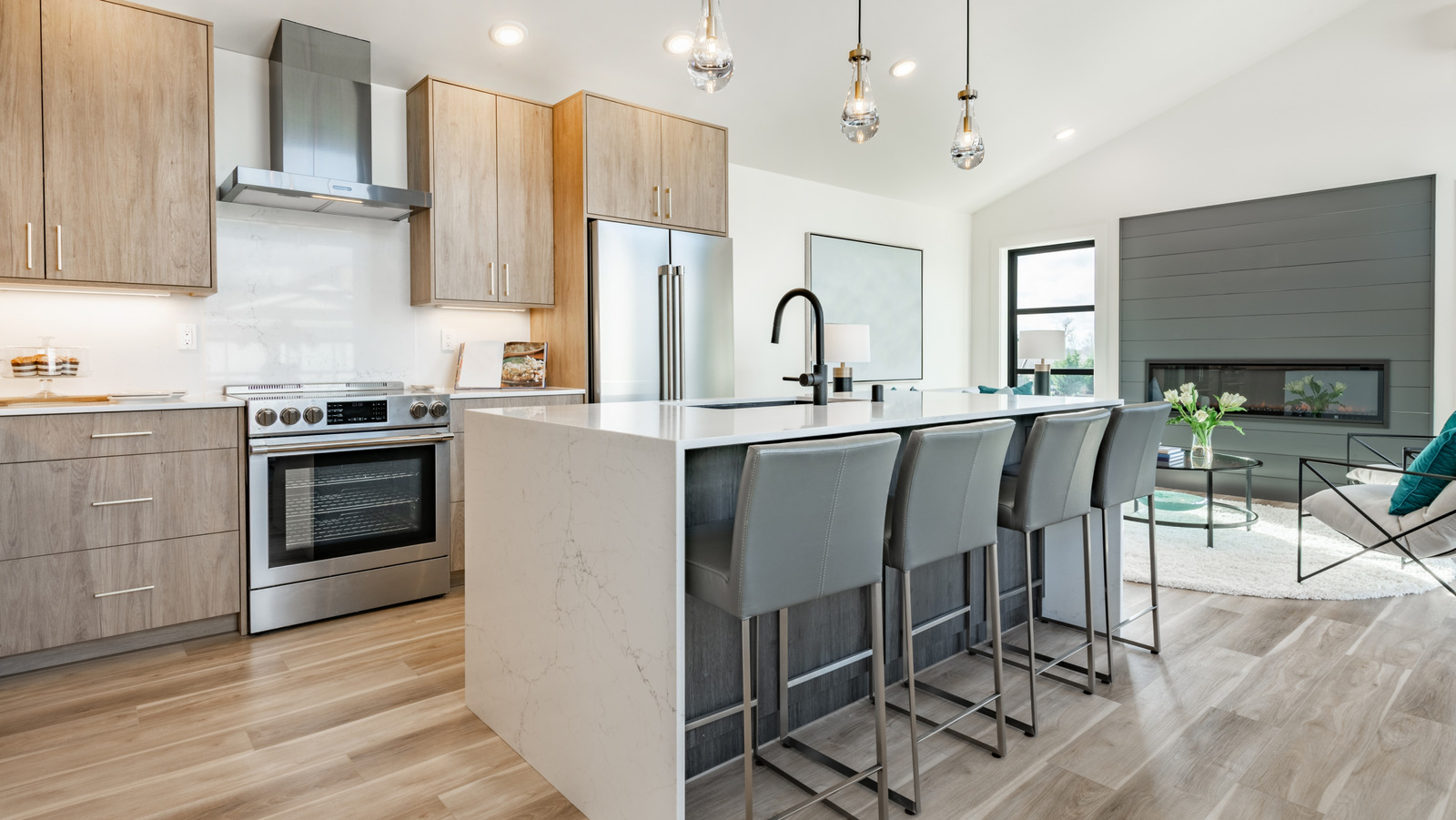It’s exciting planning a kitchen remodel. Your dream kitchen lies ahead — the beautiful center island, quartz countertops, and cherrywood cabinets you’ve always wanted. But how much thought have you put into the lighting? It’s not simply a case of fixing a central light to the ceiling in the middle of the kitchen. This is a common mistake that many people make when remodeling their kitchens that should be avoided at all costs because it can downgrade your kitchen’s functionality, aesthetics, and even your home’s value down the line. Here’s why.
Having only a single and central source of light can lead to uneven lighting throughout your kitchen. Wall-mounted cabinets or anything in the path of the light will cast shadows, lowering visibility in your main work areas like countertops or the prep sink. This could lead to you straining your eyes, raise the risk of accidents like cutting yourself because you can’t see properly, and lower the multi-tasking capability of areas due to bad illumination. A single central light is also unlikely to be bright enough or warm enough to create the ambiance that you’re looking for in your kitchen.
Also, because the kitchen is one of the main rooms that potential homeowners look at when buying a home, they may try to negotiate a lower price or decide against the purchase, seeing the kitchen as outdated or lacking in functionality. So if you’re remodeling your kitchen, here are valuable tips (including lighting) to keep in mind without breaking the bank.
Types of lighting to include in your planning
There are three types of lighting that are vital to consider when planning your kitchen setup: Ambiant, task, and accent lighting. Each has a specific purpose.
Ambiant lighting provides general lighting for the kitchen, as well as creating a good atmosphere. It’s a tool that even restaurants use to create ambiance. Lighting that helps with this is natural lighting from windows or skylights, lighting underneath the rims of countertops, toe-kick lights at the bottom of cabinets, strip lights at the top of cabinets, and recessed lights in the ceiling. Warm colors are best as opposed to a stark bright white light, and you can even include a color-changing LED light to change the ambiance.
Accent lighting is more decorative and, as its name suggests, is used to highlight (or accent) specific areas in the kitchen, or draw attention to objects or features. If you have a glass-faced cabinet, for example, with your gorgeous collection of crystal glasses, you may use in-cabinet accent lighting to highlight those. Or maybe you have a fancy backsplash that begs for an accent light to draw the eyes to it. Lighting such as LED strips, sconces, or mounted angled lights are great options for accent lighting. Just don’t go overboard with accent lighting — it should be minimal for greater impact, and only be used for those pockets in your kitchen that really deserve the spotlight. Which leads us to task lighting.
Task lighting is functional and helps keep you safe
The third, and probably most important type of lighting to get right in your kitchen, is task lighting. This illuminates the areas where you work — your kitchen island, countertops, the sink, and cooking area. Good lighting in these areas ensures that you can work safely and with ease.
For the kitchen island, pendant lights are functional and enable you to light up different parts of the island (like the prep sink), or the whole island with multiple pendants. They are also great for the stove area, providing you don’t have an extractor fan above it, which will usually provide functional lighting. Mounted lighting underneath floating cabinets brightens up countertops where you prep food or dish up meals. And lighting inside your cabinets needn’t be used only for accent purposes. Cupboards like the pantry can be very dark, making it hard to find the ingredients you’re looking for. Including built-in cupboard lights that turn on either on opening or with a switch inside, can make a world of difference. Even your drawers can benefit from lighting that’s triggered on opening, making finding and taking out cutlery and other items a breeze.
As a final tip, consider the brightness and color temperature of the lighting in each area of your kitchen. You don’t want a bright white light for ambiance, nor do you want a soft yellow light for your work areas. Consider the function of each area, and purchase your bulbs with this in mind.







